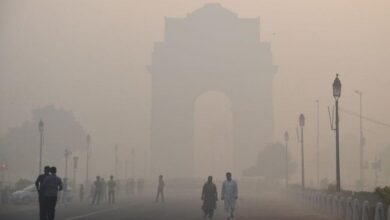Typical air contaminants can raise chance of cardiac arrest: Study

The results of this research were presented at the ESC Congress 2021
NEW DELHI — According to a new study, there is a dose-response link between the concentration of common pollutants and the risk of out-of-hospital cardiac arrest.
The research findings were presented at the ESC Congress 2021.
Dr Francesca R. Gentile of the IRCCS Policlinico San Matteo Foundation in Pavia, Italy, said they evaluated seven major pollutants and discovered that when the concentration of each grew, the chance of cardiac arrest increased.
The findings suggest that air quality should be factored into predictive models to help health systems plan service needs, as per Dr Gentile.
Study examined links exposure to air pollutants and cardiac arrest
Although air pollution has been identified as a possible cause of out-of-hospital cardiac arrest, the link between specific air pollutants and out-of-hospital cardiac arrest is still debated due to the numerous pathways involved.
This study looked at the links between short-term exposure to particulate and gaseous pollution and the risk of cardiac arrest outside of the hospital.
The research was carried out in the southern Lombardy provinces of Pavia, Lodi, Cremona, and Mantua, which cover 7,863 km2 and have a population of over 1.5 million people.
The regional cardiac arrest registry Lombardia CARe provided data on the daily incidence of cardiac arrest in 2019.
The regional agency for environmental protection (ARPA) provided data on daily concentrations of particulate matter (PM10, PM2.5), nitrogen dioxide, carbon monoxide, benzene, sulphur dioxide, and ozone over the research territory.
The ‘median’ and ‘mean’ pattern of the study
The authors computed the 2019 median daily incidence of cardiac arrest, then categorized each day as having a higher or lower incidence than the median.
The authors calculated the mean daily concentration of contaminants using data from monitoring stations located throughout the research area.
In the study region, 1,582 out-of-hospital cardiac arrests occurred in 2019, with a daily incidence of 0.3 occurrences per 100,000 residents.
On days when the incidence of cardiac arrest was above the median, the concentrations of PM10, PM2.5, nitrogen dioxide, carbon monoxide, benzene, and sulphur dioxide were considerably greater than on days when the incidence was below the median.
Ozone revealed a countertrend in the initial analysis, with much greater concentrations in the low-incidence period.
The researchers next looked at the link between each pollutant’s concentration (or dose) and the likelihood of experiencing a cardiac arrest over the median value.
After accounting for the average daily temperature, a dose-response connection was found for all of the pollutants studied, including ozone, where higher concentrations were linked to a higher risk of cardiac arrest.
Temperature was found to have an inverse association, with the risk of cardiac arrest increasing as the temperature dropped.
Researcher says correlations could help predict future occurrences
The identified correlations between individual pollutant concentrations and the chance of cardiac arrest could be utilized to predict the occurrence of this life-threatening condition in certain geographical locations in the future, Dr Gentile stated.
He added that they expect that including air pollution monitoring into ambulance forecasting models and warning systems will improve health-care efficiency.
Dirty air, as per him, should be regarded a modifiable factor that leads to cardiovascular illness, in addition to being a threat to the ecosystem.







